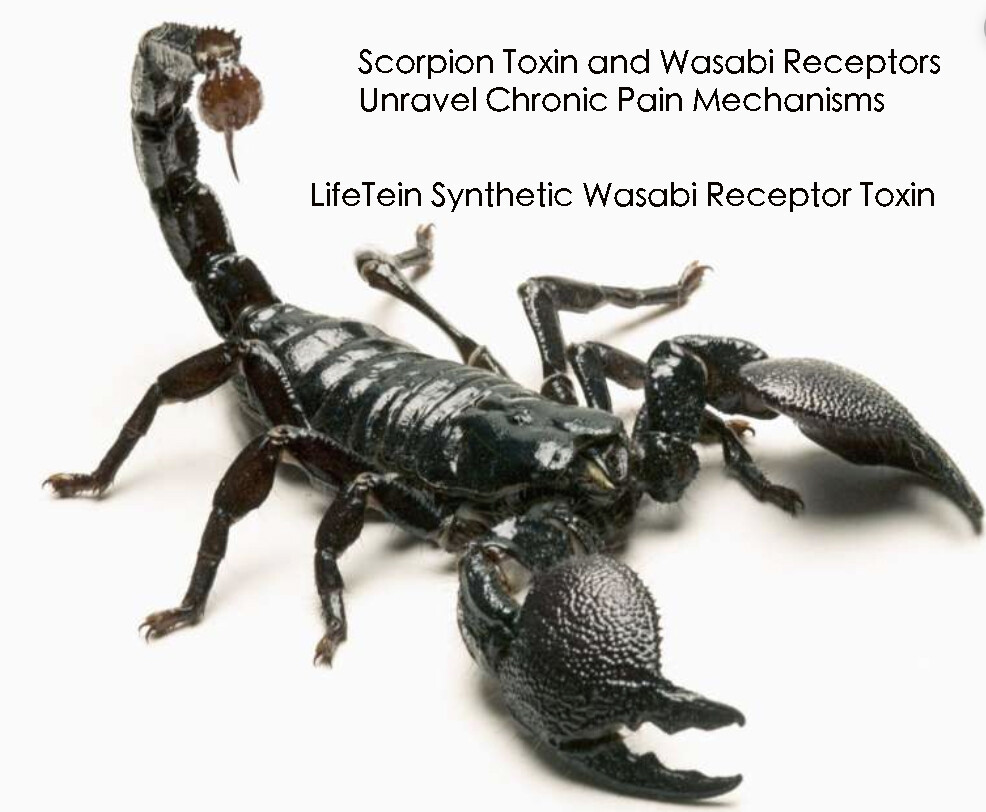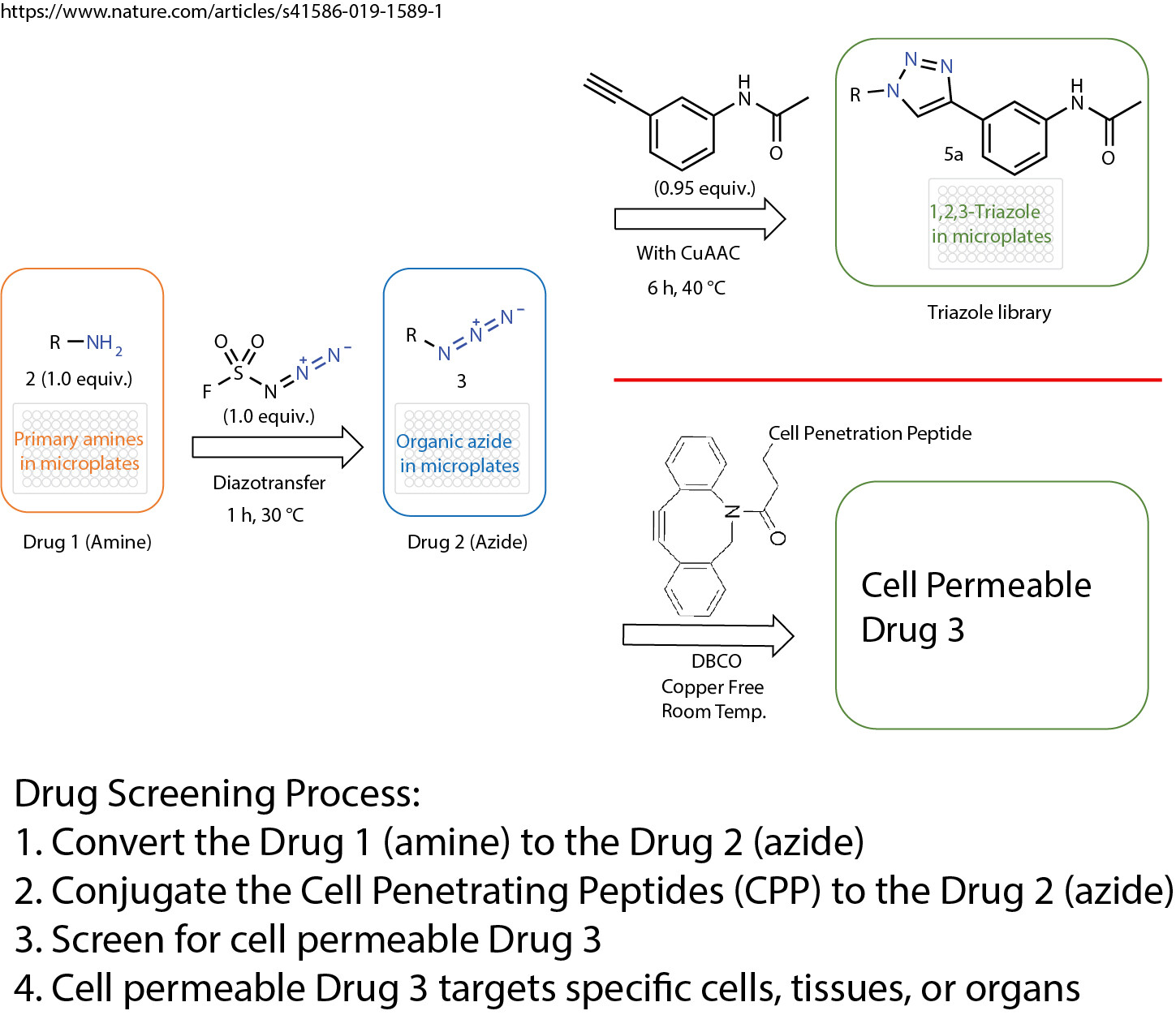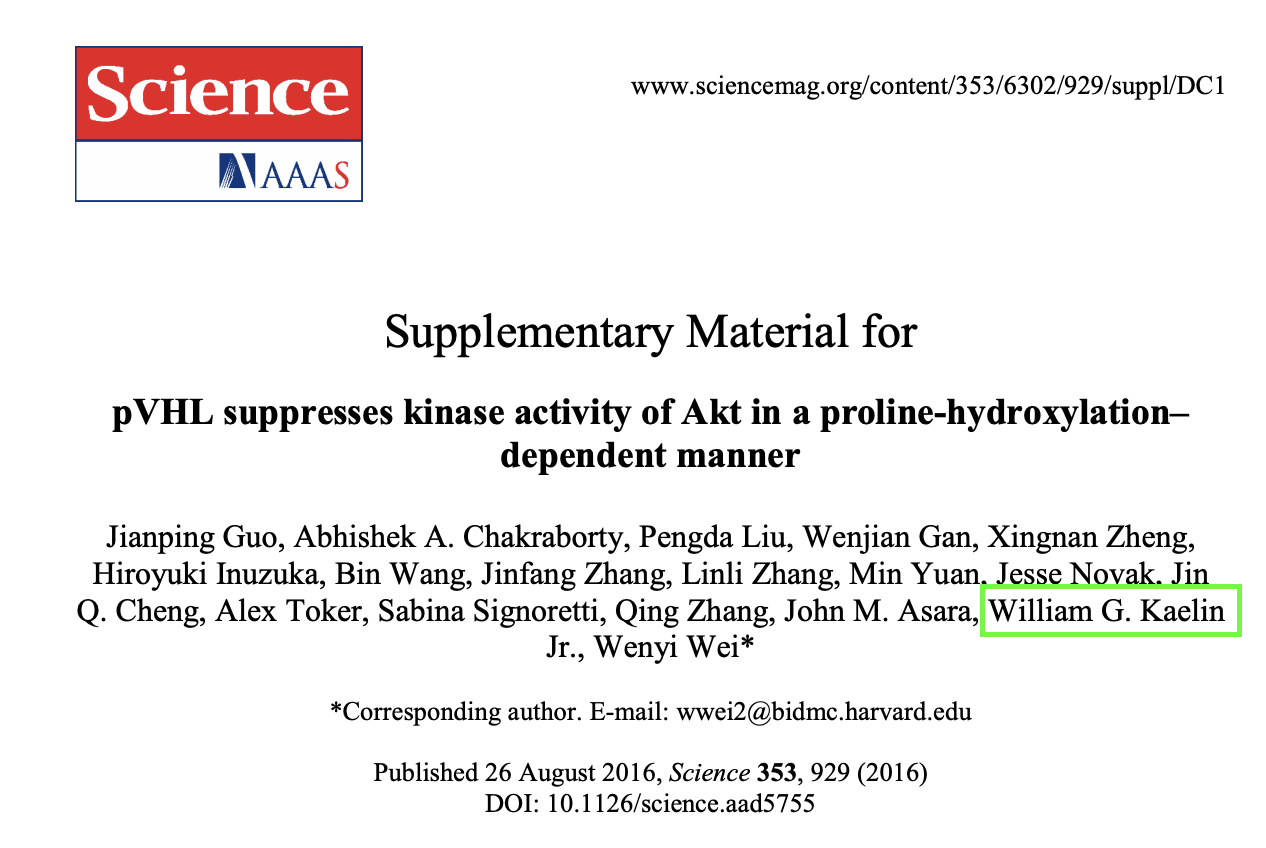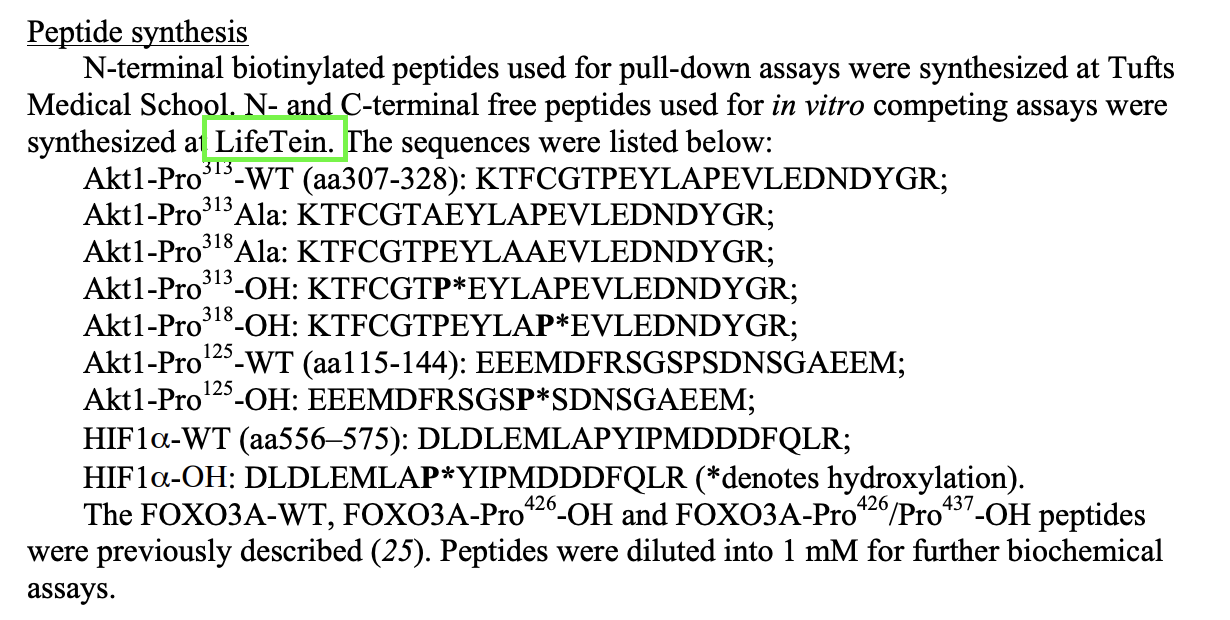LifeTein’s synthetic Wasabi Receptor Toxin, Wasabi Receptor Toxin Mutants, Biotinylated Wasabi Receptor Toxin, and AlexaFluor-488 conjugated Wasabi Receptor Toxin and Mutants helped scientists unravel chronic pain mechanisms.
Researchers at the University of California, San Francisco (UCSF) have identified a scorpion toxin that targets the “wasabi receptor”. The wasabi receptor is an ion channel protein that is responsible for the sinus-clearing or eye-stinging pain experienced when eating wasabi or chopping onions.
It was found that the scorpion toxin, a peptide as the wasabi receptor toxin, or WaTx, activates the wasabi receptor TRPA1 and triggers this pain response to irritants. The WaTx peptide is a novel cell-penetrating peptide and can directly pass through the plasma membrane, without needing to traverse through channel proteins.
The WaTx peptide could be used to study chronic pain and inflammation and may lead to the development of novel non-opioid pain therapies. WaTx produces pain and pain hypersensitivity, but not neurogenic inflammation.
Reference: Lin King, J. V., Emrick, J. J., Kelly, M. J. S., Herzig, V., King, G. F., Medzihradszky, K. F., & Julius, D. (2019). A Cell-Penetrating Scorpion Toxin Enables Mode-Specific Modulation of TRPA1 and Pain. Cell. doi:10.1016/j.cell.2019.07.014






